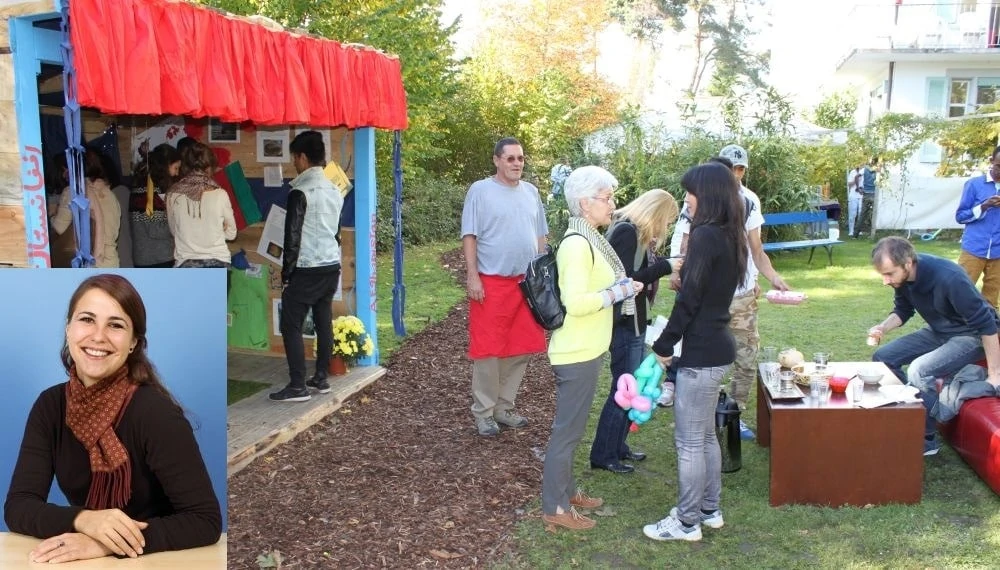The end of the year is the time when people usually look back. This was a good opportunity to ask Sabin Müller, responsible for domestic projects, a few questions about last year's pilot project with the unaccompanied asylum seekers of the Lilienberg Centre. In the interview she explains why the project goals were more than achieved.
Last year terre des hommes schweiz started a new domestic pilot project. Young people from the MNA Centre Lilienberg (MNA - Mineurs non accompagnés) in Affoltern am Albis and terre des hommes schweiz are working together in this project.
The participants agreed on an open day (also called autumn festival). This should give Lilienberg the opportunity to present itself and its inhabitants. In the course of the preparations for this day it became apparent that additional help was needed. For this reason, the young people were asked by imagine to hold a workshop on the topic of home. Which they did.
Since last summer, terre des hommes schweiz has reported several times on the progress of the pilot project. You will find the full report on this topic at the end of this interview.
How did terre des hommes schweiz come up with the idea of doing a project with the MNA Centre Lilienberg?
[Sabin Müller:] Even before I started working for terre des hommes schweiz in autumn 2012, the decision was made to set up a second Swiss project in addition to imagine. terre des hommes schweiz primarily works with young people. Since we are currently doing sensitisation work in the field of migration, the MNA of the Lilienberg centre fit in very well with this theme.
What was the aim of the project?
The main objective was to sensitize the local population. To show them who the young people who live in Lilienberg are and what their concrete life situation looks like. This should help to better integrate the young people into local structures. As the evaluation has shown, the goal has been more than achieved.
More than sensitization?
There were not so many people at the closing event, but those present were all the more motivated to do something for the young people. For example, there was the idea of approaching the local entrepreneurs so that the young people could do an apprenticeship despite their uncertain residence status. Here the ball is now in Lilienberg's court.
How was the Autumn Festival?
All those involved rated the festival as a success. I experienced it as a highlight and what I liked best was how well the young people fulfilled their role as hosts. They were very communicative and proud to present their home country.
And the visitors?
They showed a lot of interest and took their time. About 20 guided tours were made and 70 portions of the home-cooked lunch were sold. The atmosphere was very good and last but not least the weather was good. It was a beautiful autumn day.
Young people are particularly vulnerable to the public. How did you deal with the contradiction between public relations and privacy?
We discussed this intensively early on during the project. We made sure that the presentation of the home countries and the circumstances of the young people did not focus on individual fates. At the Autumn Festival, one Lilienberg staff member was assigned to each country house. In addition: Since the autumn festival took place in the Lilienberg Centre, contact with the local population took place in a somewhat protected setting.
In the run-up to the festival, the young people spent a week in the surrounding communities and introduced themselves and the Lilienberg in public places. What were the reactions of the population?
For the young people it was rather disappointing because they met few people. It was school holiday time. They would have liked to meet more people. The young people who were there were just bursting with charm. The reactions of the people were consistently positive. One noticed how the visits of the MNA got around in the communities, also with the help of the local newspaper.
What was the conclusion of the individual participants on this project?
The population has accepted our project very well. More people came than expected. Since it was all about raising awareness among the local population, it was also important that the local media reported on it. This was also the case twice. The AOZ (Asyl-Organisation Zürich - the operating organisation of the Lilienberg) was also very satisfied and thanked terre des hommes schweiz. The same applies to the Lilienberg Centre. The young people found the week a change.
What could be improved next time?
The cooperation with the young people from imagine would have to start earlier next time. In addition, we should pay more attention in the future to ensure that the same young people from imagine are always present and that they are better prepared.
The previous project was an awareness-raising project that arose from the needs of the institution. A follow-up project should ideally address the personal needs of the young people.
Will there be a sequel and how will this look?
After the evaluation with all participants it became clear that we want to continue this project. This year, however, we want to focus more on young visitors. A youth event organised by young people from the MNA centre and imagine would be conceivable. But this is only one idea among many.


